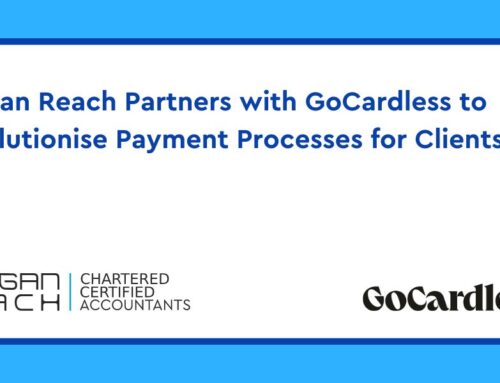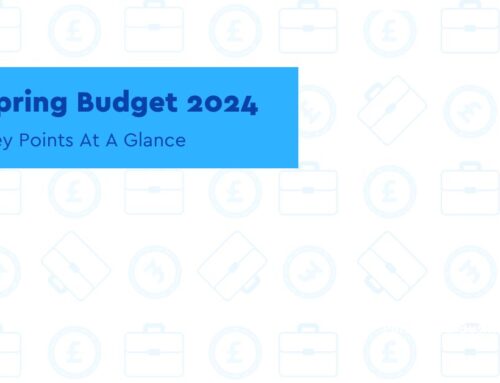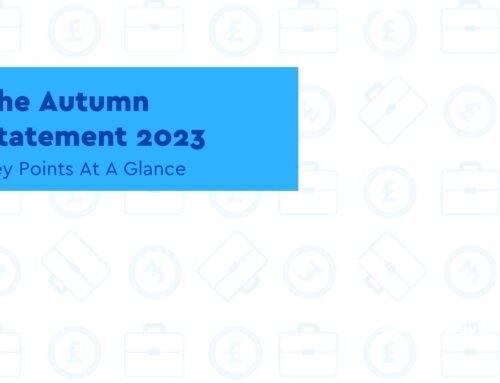News – ITSA
Reforming registration for individuals with income from self-employment or property
Key Points
- ITSA is a system HMRC uses to collect Income Tax, Class 2 and 4 NIC and Capital Gains Tax
- For many self-employed taxpayers, registering for ITSA also opens the door to important additional benefits
The government is calling for evidence on income tax self-assessment (ITSA) registration to find out whether bringing forward the point when newly self-employed individuals and landlords are required to identify themselves to HMRC would help encourage them to keep on top of their tax affairs.
ITSA is a system HMRC uses to collect Income Tax, Class 2 and 4 National Insurance and Capital Gains Tax, where tax has not been deducted automatically from wages, pensions and savings. It is also used by individuals who need to claim a tax relief or allowance and companies making claims outside their company tax returns.
The aim is to understand whether:
- Bringing forward the point at which taxpayers are required to identify themselves to HMRC will help taxpayers stay on top of their tax affairs
- Changes could help create a more efficient tax system which gives taxpayers clarity on their obligations
- Earlier registration could lead to earlier entitlement to additional benefits
- The benefits of Making Tax Digital could be accessed sooner
In July 2020, the government published a 10-year strategy to build a trusted, modern tax administration system. The strategy signposted a range of reforms the government will consider, including how taxpayers are identified and registered by HMRC. HMRC is now keen to engage with respondents to explore the case for reforming registration for the self-employed and landlords in more detail.
HMRC is welcoming responses from any individual, business or representative with views on how and when individuals should register for Income Tax Self Assessment and start to interact with the tax system.
For many self-employed taxpayers, registering for ITSA also opens the door to important additional benefits, such as paying Class 2 National Insurance Contributions to build entitlement to a state pension, accessing tax free childcare or the construction industry scheme
Earlier registration could, for example, mean the newly self-employed and landlord population could access the benefits of Making Tax Digital (MTD) sooner.
Taxpayers notify HMRC of liability through the process of “registering” for ITSA. Taxpayers are advised to use the Online Tax Registration Service (OTRS) using different forms depending on whether individuals are registering self-employment or not.
Registering self-employment for Class 2 National Insurance contributions (NICs) and notifying liability are two separate things that are done together when registering for ITSA. Class 2 NICs provide entitlement to certain contributory benefits, including state pension.
Therefore, individuals who do not have to pay tax, for example because they are below the income tax threshold, may register for ITSA to pay Class 2 NICs .
Making Tax Digital for ITSA
From April 2024 Making Tax Digital (MTD) for ITSA will require existing self-employed taxpayers and landlords with qualifying income greater than £10,000 to keep their records digitally and submit their data using MTD-compatible software.
Businesses that start after April 6, 2023 and submit a return with a qualifying income in excess of £10,000 will need to start using MTD for ITSA from the beginning of the next tax year. Instead of an annual Income Tax return, businesses and landlords will send HMRC quarterly updates of their income and expenditure, before finalising their business income after the end of the tax year.
When taxpayers notify liability and register for ITSA they can prepare for upcoming MTD requirements or choose to join MTD early from the commencement of their business.
News – Inheritance Tax
Treasury rules out IHT reform recommendations
Key Points
- The OTS has published a series of reports in recent years with recommendations address inequalities
- In 2019, it suggested cutting the period that gifts are eligible to be taxed from seven years to five
The government has decided not to take on recommendations made by the Office of Tax Simplification (OTS) for inheritance tax.
The OTS has published a series of reports in recent years with recommendations to make the tax easier to understand and address inequalities.
In 2019, it suggested cutting the period that gifts are eligible to be taxed from seven years to five and proposed abolishing the tapered rate of inheritance tax (IHT).
Where a tax is to be paid, the OTS recommended clarifying the rules on who is liable to pay as well as how the £325,000 threshold is allocated between recipients.
The following year, the OTS suggested a removal of certain reliefs for the tax including one which allows a married couple to pay no levy on the passing of up to £1m including the family home, due to the combination of personal tax thresholds.
In a letter to the OTS, Lucy Frazer, financial secretary to the Treasury, pointed to the Chancellor’s announcement in the Spring Budget that the thresholds at which estates start to pay inheritance tax would be frozen until April 2026, saying this was done to “help rebuild the public finances and fund public services”.
She wrote: “As you recognise, the combination of nil-rate bands, exemptions and reliefs means around 94 per cent of estates are forecast to have no liability over the coming years.
“However, IHT still makes an important contribution to the public finances, and it is forecast to raise £6bn in 2021-22 to help fund public services.”
“As a result, after careful consideration of your recommendations, the government has decided not to proceed with any changes at the moment, but will bear your very valuable work in mind if the government considers reform of IHT in the future,” Frazer added.
Overview
Inheritance Tax is a tax on the estate (the property, money and possessions) of someone who’s died.
There’s normally no Inheritance Tax to pay if either:
- The value of your estate is below the £325,000 threshold
- You leave everything above the £325,000 threshold to your spouse, civil partner, a charity or a community amateur sports club
If the estate’s value is below the threshold you’ll still need to report it to HMRC.
If you give away your home to your children (including adopted, foster or stepchildren) or grandchildren your threshold can increase to £500,000.
If you’re married or in a civil partnership and your estate is worth less than your threshold, any unused threshold can be added to your partner’s threshold when you die. This means their threshold can be as much as £1 million.
Inheritance Tax rates
The standard Inheritance Tax rate is 40%. It’s only charged on the part of your estate that’s above the threshold.
Example: Your estate is worth £500,000 and your tax-free threshold is £325,000. The Inheritance Tax charged will be 40% of £175,000 (£500,000 minus £325,000).
The estate can pay Inheritance Tax at a reduced rate of 36% on some assets if you leave 10% or more of the ‘net value’ to charity in your will.
Reliefs and exemptions
Some gifts you give while you’re alive may be taxed after your death. Depending on when you gave the gift, ‘taper relief’ might mean the Inheritance Tax charged on the gift is less than 40%.
Other reliefs, such as Business Relief, allow some assets to be passed on free of Inheritance Tax or with a reduced bill.
Contact the Inheritance Tax and probate helpline about Agricultural Relief if your estate includes a farm or woodland.
Who pays the tax to HMRC
Funds from your estate are used to pay Inheritance Tax to HM Revenue and Customs (HMRC). This is done by the person dealing with the estate (called the ‘executor’, if there’s a will).
Your beneficiaries (the people who inherit your estate) do not normally pay tax on things they inherit. They may have related taxes to pay, for example if they get rental income from a house left to them in a will.
People you give gifts to might have to pay Inheritance Tax, but only if you give away more than £325,000 and die within 7 years.
News – HMRC Guidance
HMRC issues plastic packaging tax examples
Key Points
- At Budget 2018, a new tax on plastic packaging with less than 30% recycled plastic was announced
- The rate of tax will be £200 per metric tonne of plastic packaging
HMRC has issued a set of examples designed to help businesses assess whether they need to register for plastic packaging tax when it comes into force from April 2022 and also whether components manufactured or imported are chargeable to the tax.
At Budget 2018, a new tax on plastic packaging with less than 30% recycled plastic was announced. Primary legislation was included in Finance Bill 2021 and received Royal Assent June 10, 2021.
Manufacturers or importers of plastic packaging, including importers of packaging which already contains goods, will need to take action to prepare for the new tax.
The rate of tax will be £200 per metric tonne of plastic packaging.
A charge to PPT arises when a chargeable plastic packaging component is produced in the UK by a person acting in the course of a business or where it is imported into the UK on behalf of such a person. It only applies to ‘finished’ products.
When to register for Plastic Packaging Tax
How to apply the forward look test
A business normally manufactures 0.25 tonnes of plastic packaging every month.
On 16 May 2022, they receive an order for 20 tonnes of plastic packaging to be delivered by the end of May.
The business will need to register for Plastic Packaging Tax by 14 June 2022.
They will account for and pay any tax due on all the plastic packaging that they manufacture from 16 May onwards, including their normal production as well as the new order.
The business’s liability date will be 16 May 2022.
How to apply the backwards look test in the first year of the tax
A business normally manufactures 4 tonnes of plastic packaging every month.
On 1 May 2022, they have only manufactured 4 tonnes of plastic packaging between 1 April and 30 April, so do not need to register.
On 1 June, they have manufactured 8 tonnes between 1 April and 31 May, so still do not need to register.
On 1 July, they have manufactured 12 tonnes between 1 April and 30 June, so must now register for Plastic Packaging Tax by 30 July.
The business’s liability date will be 1 July 2022. They must now account for any tax due on all plastic packaging manufactured from 1 July onwards.
How to apply the backwards look test from 1 April 2023
A business normally manufactures or imports 0.5 tonnes of plastic packaging every month.
On 1 April 2023 they have only manufactured or imported 6 tonnes of plastic packaging between 1 April and 31 March, so do not need to register.
They then receive an order for 8 tonnes of plastic packaging which they delivered on 15 April 2023.
On 1 May, they have manufactured more than 10 tonnes over the last 12 months, so must now register for Plastic Packaging Tax by 30 May.
The business’s liability date will be 1 May 2023. They must now account for any tax due on all plastic packaging manufactured and imported from 1 May onwards.
If you’ve deferred paying the tax but have not exported the packaging within 12 months
A business manufactures plastic packaging on 23 August 2022. They intend to export the packaging themselves within 12 months.
They account for the plastic packaging on their July to September 2022 quarterly tax return.
No tax was paid as the business intended to directly export the packaging.
By 23 August 2023 the export has not taken place. This means Plastic Packaging Tax must be paid as the packaging had not been directly exported within 12 months.
Plastic Packaging Tax must be accounted for and paid on the business’s next tax return, which would be their July to September 2023 quarterly tax return.
Claiming Plastic Packaging Tax credits
Claiming a credit for packaging which has been exported
A business accounts for 20 tonnes of plastic packaging on their January to March 2023 quarterly tax return.
They paid the £4,000 tax due in April.
In May 2023, a business customer provides evidence that they exported 5 tonnes of the plastic packaging they purchased.
The business who paid the Plastic Packaging Tax is allowed to claim a credit for the 5 tonnes (£1,000) on their next tax return.
Their Plastic Packaging Tax liability in the next accounting period is 30 tonnes.
They are allowed to reduce this liability by claiming the credit on their April to June 2023 quarterly tax return.
To do this, they enter 5 tonnes (£1,000) in the credit box on their tax return.
Claiming a credit when plastic packaging is converted into different packaging
A business accounts for 30 tonnes of plastic packaging components on their April to June 2023 quarterly tax return.
They paid the £6,000 tax due in July.
They then supply 10 tonnes of the plastic packaging to another business.
The other business uses the plastic packaging components to manufacture new plastic packaging components, which are also liable for Plastic Packaging Tax.
Once they receive evidence confirming the plastic has been converted into a different plastic packaging component, the business who paid the Plastic Packaging Tax is allowed to claim a credit for the 10 tonnes (£2,000) on their next tax return.
To do this, they enter 10 tonnes (£2,000) in the credit box on their next tax return.
They also need to have the original documents to show they have accounted for and paid the tax previously.
News – Customs Declarations
Customs Declarations from EU changing on January 1
Key Points
- HMRC says businesses should consider how they will make their declarations
- They can either appoint an intermediary, such as a customs agent, or submit the declarations themselves
HMRC has warned businesses that Customs Declarations on imports from the EU will change once again at the start of next year.
Customs declarations
From January 1, 2022, businesses will no longer be able to delay making import customs declarations under the Staged Customs Controls rules that have applied during 2021. Most businesses will have to make declarations and pay relevant tariffs at the point of import.
The tax authority says businesses should consider how they will make their declarations. They can either appoint an intermediary, such as a customs agent, or submit the declarations themselves.
For more information, find out how to get someone to deal with customs for you.
Some businesses already have a ‘Simplified Declarations’ authorisation from HMRC that allows their goods to be released directly to a specified customs procedure without having to provide a full customs declaration at the point of release.
Businesses that want to use Simplified Declarations will need authorisation to do so. It can take up to 60 calendar days to complete the checks needed for this and therefore a new application made now may not be authorised before January 1, 2022.
For more information, find out how to apply to use simplified declarations for imports.
From January 1, businesses must use the correct country code for the country of origin and the country of dispatch when they complete their customs declaration. HMRC says that for EU countries, the individual country code of the relevant member state should be used. The EU country code must not be used and will be removed from HMRC’s systems shortly.
Border controls
Ports and other border locations will be required to control goods moving Great Britain and the EU. This means that unless goods have a valid declaration and have received customs clearance, they will not be able to be released into circulation, and in most cases will not be able to leave the port.
From January 1, 2022, goods may be directed to an Inland Border Facility for documentary or physical checks if these checks cannot be done at the border.
It’s important that those involved in transporting your goods are ready and understand how you intend to operate from January 2022.
From January 1, 2022, you must also submit an “arrived” export declaration if your goods are moving through one of the border locations that uses the arrived exports process.
If you do not follow the correct process from January 1, 2022, the new systems will not permit your goods to leave the country and they will be turned away as they will not hold export clearance.
If you use a service such as a courier or freight forwarder to move your goods, you need to check their terms and conditions about who will make the declarations, and what other information they need from you to do this.
Postponed VAT Accounting
If you’re a VAT-registered importer, you can continue to use Postponed VAT Accounting (PVA) on all customs declarations that require you to account for import VAT, including supplementary declarations, except when HMRC have told you otherwise.
Our Latest Snippets
Weekly HMRC, Gov’t and tax updates
House price growth soars to 15-year high
Average UK house prices continued to break records in November, rising for the fifth consecutive month to £272,992, according to the latest Halifax figures.
Halifax data shows that quarterly house price inflation is now at its strongest level since late 2006 and sees Wales as the strongest performing region once again with average prices breaking to £200k barrier for the first time ever.
Northern Ireland also continues to record double-digit annual growth (10.0%, average house price of £169,348).
House prices also continue to rise in Scotland, with the average property now up 8.5% year-on-year, with the average price of £191,140 also the most expensive on record. In England, the North West remains by far the strongest performing region (+11.4%), which is its highest rate of growth since 2005 (average house price of £209,287).
IR35 reforms have been ‘damaging’, survey finds
The introduction of IR35 reforms this year had a “significant and damaging” effect on contractors and the firms that rely on them
A survey of 3,750 contractors by compliance platform IR35 Shield found that many organisations have imposed a blanket ban on contractors, moved work overseas, or culled a significant proportion of their contractor workforce.
Almost half (47%) of the contractors polled said that firms they had worked with banned the use of contractors after the reforms were introduced in the private sector on 6 April 2021.
The majority (88%) of on-payroll contractors have been told that they must work via an umbrella company, but only 6% are happy to use one.
The use of umbrella companies have come under fire as critics claim some exploit contractors by withholding holiday pay and make errors in national insurance payments.
The government has published a call for evidence to help it better understand umbrella companies and the role they pay in the labour market. Earlier this year MPs voted against introducing further regulation.
Late payments identified as key barrier to growth for small businesses
Almost a fifth (18%) of small business owners have identified late payments as the key barrier to their growth – behind only competition as the biggest barrier – according to new research by Superscript, the insurtech which provides SMEs with flexible insurance.
The research, part of a report titled: Supercharging small business growth, highlights the struggles that small businesses face with late payments – six in ten respondents said that more than 10% of their cash flow comes through late. While for three in ten respondents, over a quarter of their cash flow is delivered through late payments.
A quarter (25%) of respondents said they’ve had to pay suppliers late as a direct result of receiving a payment late, contributing to a vicious circle of late payments. Nearly a fifth of respondents said they have had to increase their business overdraft limit to compensate for a late payment, while 15% say they have had to make a loan repayment late. Nearly two fifths (37%) of businesses with 25 – 49 employees say they have had to either postpone hiring someone, make redundancies or pay cuts as a result of late payments.
LITRG warns taxpayers of refund company fraud
The Low Incomes Tax Reform Group (LITRG) is warning taxpayers not to share their Government Gateway username and password details with anyone – including companies that offer to make tax relief claims on their behalf.
This comes after a spate of reports from taxpayers about fraudulent tax relief claims that were submitted via self assessment tax returns.
According to taxpayers involved in the fraudulent claims, the refund company involved asked them to register for a self assessment tax return to claim employment expenses. The company then used the individual’s Government Gateway login credentials to prepare and submit a tax return containing inappropriate claims for Enterprise Investment Scheme (EIS) relief, a sophisticated incentive that is not relevant for most taxpayers.
Get In Touch
At Morgan Reach, we understand every business needs a little help now and again-especially when it comes to the financial side of things. Therefore, to help our clients and visitors we endeavour to cover as much of the business news as possible. If you are self-employed or run a business and need assistance and advice on how these news could make a difference to you or your business, feel free to get in touch with the experts at Morgan Reach. Our business growth experts at Morgan Reach will guide you through what support is available for you or your business as well as the latest news that may affect you.







